Ricardo Pau-Llosa
Miami-Dade College professor preserves Latin American traditions
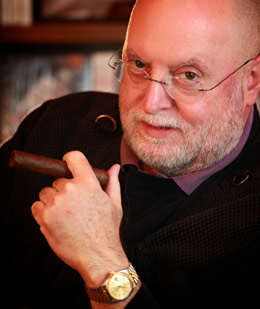

Anthony Japour (AJ) is an independent curator, private art dealer and owner of AJ Japour Gallery. The gallery deals in contemporary art with a focus on the Chinese Contemporary Art Movement and its relationship to the pillars of Western Contemporary Art. Since 2003, AJ has produced numerous art exhibitions and installations in Miami and South Florida. In addition, the Gallery’s secondary mission is to support organizations dedicated to the health, education, and welfare of children. AJ has served on the Fine Arts Board and the Cultural Arts Council of the City of Miami Beach.

On my third visit to the private collection of Ricardo Pau-Llosa, I found myself deep in conversation about how the art of Latin America fits into the larger history of Western art and why the Latin American artists could not conform to the strict genres of 20th century cubism, constructivism, and surrealism.
Ricardo Pau-Llosa, professor of English at Miami-Dade College, is a well-known art critic, poet, and has been collecting art since he was 20 years old. Last fall, the Snite Museum of Art at the University of Notre Dame showcased over 50 works from Pau-Llosa’s collection in an exhibition titled Parallel Currents that also focused on his extensive achievement as a thinker in the visual arts and as a poet.
Born in Cuba and raised in Chicago, Tampa and Miami, Pau-Llosa was inspired to collect Cuban art of the modern era (1960’s -70’s).
“It balanced the tragedy of totalitarian Cuba with the epic of Cuban creativity,” he said. To the professor, there was perhaps too much focus on the loss of material possessions, land and business rather than what he perceived as the larger tragedy, which was the loss of Cuban culture.
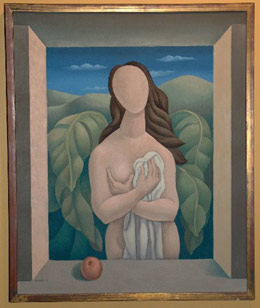
In Miami, a segment of the Cuban culture took root and Pau-Llosa wanted to be part of the “transterritorial Cuba”; the Cuba that lives in another dimension. First collecting then writing and promoting the artists in exile became a major force in his life. In addition, patronage figures prominently in Pau-Llosa’s life, not only by buying artists’ work but in helping the artist become known by museums, curators, and Latin American magazines.
The collection, which has a decided focus on painting, is intentional. To quote Pau-Llosa, “Painting is the poetry of the visual arts.” Being a poet himself, it is natural that he would search out works that speak to him in a poetic fashion. Through his writings as an independent art critic, poet, and senior editor Art International, he sought to dispel the concept of Latin America as a backwater or as “derivative” of European and American art.
Mario Carreño (b. Havana, Cuba, 1913-1999)
Among the artists Pau-Llosa helped bring back into the limelight, after a period of obscurity, is Mario Carreño, a Cuban-born Chilean painter.
In the 1930’s, Carreño attended one of the most important art academies in Havana, the San Alejandro Academy. Later that decade he moved to Madrid (1932) to study at the San Fernando School. He later moved to Mexico where he met muralists Diego Rivera, David Alfaro Siqueiros and José Clemente Orozco and the mural becomes part of his work and a Latin American sensibility is infused in his art.
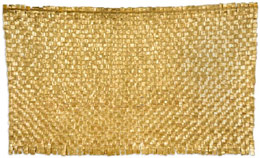
Carreño continues his studies at Paris until World War II when he moves to New York City, where he lived for more than a decade. Between 1951 he moved back to Cuba and in 1958 moved to Chile where he remained until his death in 1999.
By the late 1970’s, Carreño had fallen off the radar. Pau-Llosa bought Eva Tropical for $300 in 1979, a work he continues to cherish. In 2009, Christie’s sold Carreno’s “Fuego en el batey” (Fire in the sugar mill village) for $2.18 million, among the highest records for a work by a Cuban artist.
Olga de Amaral (b. Bogotá, Colombia, 1932)
Among the vast Pau-Llosa collection on view, one of the works by Olga de Amaral keeps inviting me back. Educated at the Cranbook Academy of Art in Michigan where she studied fabric design, Amaral eventually returned to Bogota.
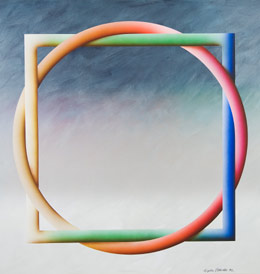
One of the early pioneers in textile, Amaral pioneered the elevation of textile and weaving from craft to fine art turning two-dimensional textiles into sculptural works.
Drawing on allusions of Spanish colonialism, Amaral uses gold-leaf which draws the light and glows in the dark. Amaral’s work is reminiscent of a contemporary artist, El Anatsui (born 1944 in Ghana), exhibited at the Bass Museum for Art Basel Miami Beach 2009, who creates hanging tapestries with found objects.
Rogelio Polesello (b. Argentina, 1939)
Rogelio Polesello was educated at the Escuela Nacional de Bellas Artes Manuel Belgrano and the Escuela de Artes Visuales Prilidiano Pueyrredón. He had his first one-man exhibition at the age of 20 in Buenos Aires and by his early 20s had a solo exhibition in Washington, D.C.
Polesello’s work is in the geometric tradition of Latin America and took Constructivism into new directions. One of his sculptures, Optical Panel, 1969 creates an array of reflections on the wall and floor resulting in a illusory pattern.
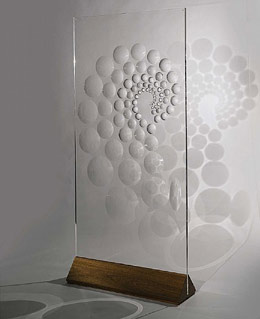
Polesello paintings and sculptures link the interest in light, reverberation, and refraction of the international postwar Op-Art movement with Latin American Constructivism’s interest in the infinite as a concept often expressed symbolically through geometric and luminous images.
The depth with which Pau-Llosa has collected the works of Latin artists resulted from his coming of age in Miami during the 70’s and 80’s. He saw the absence of Latin American artists among the heralded works in the United States and took up the challenge of correcting the “blind spot” about the contributions of Latin American Art in North American culture.
His work continues to this day with his support in a group of emerging artists known in Miami as GUILD, now on view at the Ladderroom Art Space, 6900 Biscayne Blvd at UVA Plaza.
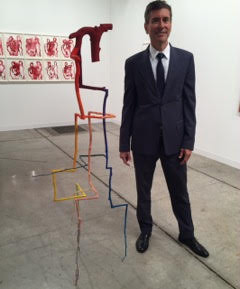
Anthony Japour is an art collector and art advisor. Japour lectures on the Chinese Contemporary Art Movement and its relationship to the pillars of Western Contemporary Art. For over a decade [2002-2012], Japour mounted numerous art exhibitions and installations in Miami Beach and South Florida through AJ Japour Gallery and linked these exhibitions to charity events at his home in South Beach devoted to the health, education and welfare of children. Japour has served on the Fine Arts Board and the Cultural Arts Council of the City of Miami Beach. Japour has been a contributor writing on contemporary art for SocialMiami.com since 2010.

